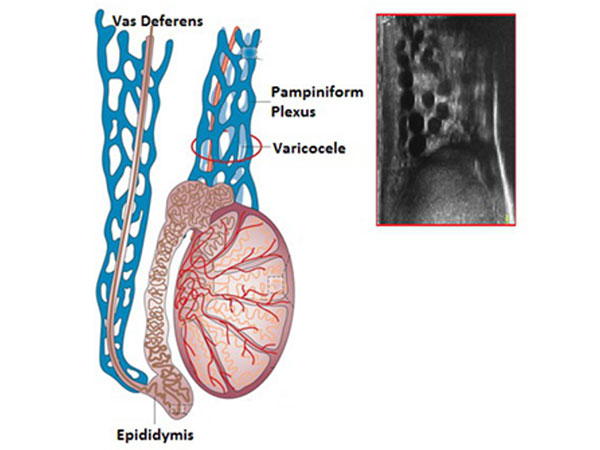
Varicocele Treatment

What is a varicocele?

The scrotum is a skin-covered sac that holds your testicles. It also contains the arteries and veins that deliver blood to the reproductive glands. A vein abnormality in the scrotum may result in a varicocele.A varicocele is an enlargement of the veins within the scrotum. These veins are called the pampiniform plexus.
A varicocele only occurs in the scrotum and is very similar to varicose veins that can occur in the leg.A varicocele can result in decreased sperm production and quality, which in some cases can lead to infertility. It can also shrink the testicles.
Varicoceles are common. They can be found in 15 percent of the adult male population and around 20 percent of adolescent males. They’re more common in males aged 15 to 25.
Varicoceles generally form during puberty and are more commonly found on the left side of your scrotum. The anatomy of the right and left side of your scrotum isn’t the same. Varicoceles can exist on both sides, but it’s extremely rare. Not all varicoceles affect sperm production.

What causes a varicocele to develop??

A spermatic cord holds up each testicle. The cords also contain the veins, arteries, and nerves that support these glands. In healthy veins inside the scrotum, one-way valves move the blood from the testicles to the scrotum, and then they send it back to the heart.
Sometimes the blood doesn’t move through the veins like it should and begins to pool in the vein, causing it to enlarge. A varicocele develops slowly over time.
There are no established risk factors for developing a varicocele, and the exact cause is unclear.
Recognizing the symptoms of a varicocele

You may have no symptoms associated with a varicocele. However, you might experience:
- a lump in one of your testicles
- swelling in your scrotum
- visibly enlarged or twisted veins in your scrotum, which are often described as looking like a bag of worms
- a dull, recurring pain in your scrotum
Possible complications

This condition can have an effect on fertility. Varicocele is present in 35 to 44 percent of men with primary infertility and in 45 to 81 percent of men with secondary infertility.
Primary infertility is generally used to refer to a couple that hasn’t conceived a child after at least one year of trying. Secondary infertilitydescribes couples that have conceived at least once but aren’t able to again.
How is a varicocele diagnosed?

Your doctor usually diagnoses the condition after a physical exam. A varicocele can’t always be felt or seen when you’re lying down. Your doctor will most likely examine your testicles while you’re standing up and lying down.
Your doctor may need to perform a scrotal ultrasound. This helps measure the spermatic veins and allows your doctor to get a detailed, accurate picture of the condition.
Once the varicocele is diagnosed, your doctor will classify it with one of three clinical grades. They’re labeled grades 1 through 3, according to the size of the lump in your testicle. Grade 1 is the smallest and grade 3 the largest.
The size doesn’t necessarily affect the overall treatment because you may not require treatment. Treatment options are based on the degree of discomfort or infertility issues you have.
Methods of treatment for varicoceles

It’s not always necessary to treat a varicocele. However, you may want to consider treatment if the varicocele:
- causes pain
- causes testicular atrophy
- causes infertility
You may also want to consider treatment if you’re thinking about assisted reproductive techniques.
This condition can cause problems with testicular functioning in some people. The earlier you start treatment, the better your chances of improving sperm production.
Wearing tight underwear or a jock strap can sometimes provide you with support that alleviates pain or discomfort. Additional treatment, such as varicocelectomy and varicocele embolization, might be necessary if your symptoms get worse.

Varicocelectomy
A varicocelectomy is a same-day surgery that’s done in a hospital. A urologist will go in through your abdomen or pelvis and clamp or tie off the abnormal veins. Blood can then flow around the abnormal veins to the normal ones. Talk with your doctor about how to prepare for the surgery and what to expect after the operation.
Varicocele embolization
Varicocele embolization is a less invasive, same-day procedure. A small catheter is inserted into a groin or neck vein. A coil is then placed into the catheter and into the varicocele. This blocks blood from getting to the abnormal veins.
